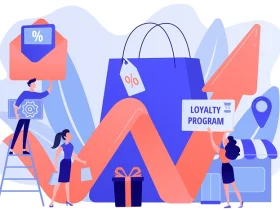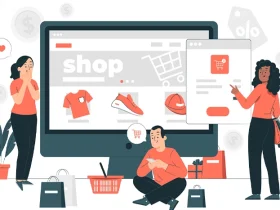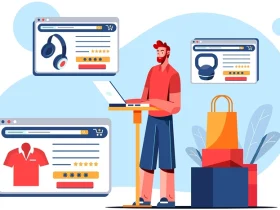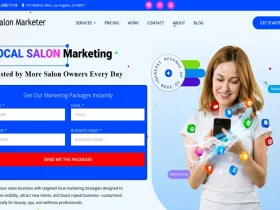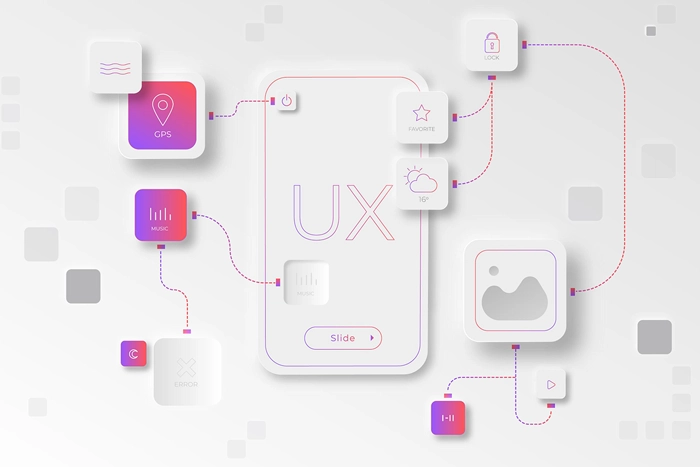
In the highly competitive world of ecommerce, your website’s design isn’t just about looking good—it’s a critical factor in driving sales and creating a memorable customer experience. Your ecommerce website design can either encourage visitors to explore and purchase or leave them frustrated enough to click away. Let’s dive into how great website design can increase ecommerce sales and why it’s worth investing in.
First Impressions Matter
You’ve heard the phrase: “You never get a second chance to make a first impression.” This is especially true with ecommerce website design. A visitor forms an opinion about your site within seconds, and if your design is outdated, cluttered, or unprofessional, they’ll leave before you can showcase your products.
Start with a clean, professional web design that reflects your brand’s identity. Mobile responsiveness is non-negotiable since more than 60% of ecommerce traffic comes from mobile devices. A well-organized layout, a visible menu, and clear calls-to-action (CTAs) ensure visitors can navigate your site with ease.
Speed and Performance
No matter how stunning your ecommerce website looks, slow loading times can ruin the user experience. Studies show that a 1-second delay in page load time can result in a 7% reduction in conversions. A fast website not only enhances user satisfaction but also boosts your search engine rankings.
Use tools like Google PageSpeed Insights to identify speed issues. Optimize your ecommerce website by compressing images, minimizing code, and leveraging content delivery networks (CDNs). Remember, every second counts when it comes to retaining your customers’ attention.
User-Centric Design
Great ecommerce websites put users first. An intuitive and user-friendly design can make all the difference in converting casual visitors into loyal customers. Focus on creating a seamless shopping experience by anticipating your customers’ needs and preferences.
Personalized product recommendations, a prominent search bar, and easy filtering options can help users find what they’re looking for quickly. Additionally, removing distractions and guiding users through a logical flow from product discovery to checkout can improve conversion rates.
Visual Appeal with Purpose
Visuals are powerful tools in e-commerce. The right combination of colors, typography, and imagery can evoke emotions, build trust, and drive purchases. Choose a color scheme that aligns with your brand and appeals to your target audience.
High-quality product photos and videos are essential for showcasing your offerings. Consider including multiple angles, zoom features, and even 360-degree views to give customers a comprehensive look at your products. Consistency in design elements across your site also reinforces your brand identity and creates a cohesive shopping experience.
Trust Signals and Credibility
Online shoppers are naturally cautious about where they spend their money. Your website design should instill trust and credibility from the get-go. Incorporate trust signals like SSL certificates to ensure secure transactions, display customer reviews and testimonials, and highlight clear return policies.
Trust badges, such as “Secure Checkout” or “Verified by Visa,” can also reassure customers that their information is safe. Highlighting partnerships with well-known brands or payment processors further establishes your legitimacy.
Streamlined Checkout Process
A complicated or lengthy checkout process is one of the biggest reasons for cart abandonment. Simplify the process by reducing the number of steps required to complete a purchase. Offer a guest checkout option for first-time customers who may not want to create an account.
Provide multiple payment methods, including popular options like Apple Pay, and Google Pay. Transparent pricing, including shipping costs, and an easy-to-use progress indicator during checkout can also help keep customers on track.
Don’t forget about abandoned cart recovery strategies. Automated email reminders, along with incentives like discounts or free shipping, can entice users to return and complete their purchases.
A/B Testing and Analytics
Ecommerce website design isn’t a one-and-done task. To continually improve your e-commerce site, leverage A/B testing and analytics. Test different layouts, CTAs, and landing page designs to see what resonates best with your audience.
Use analytics tools to track key metrics like conversion rates, bounce rates, and average session duration. This data can help you identify problem areas and refine your design for better results. Remember, what works for one ecommerce site may not work for another, so tailor your design decisions to your specific audience.
Conclusion
In ecommerce, a great website design is more than just an aesthetic choice—it’s a powerful driver of sales and customer loyalty. By focusing on first impressions, speed, user-centric design, visual appeal, trust signals, and a streamlined checkout process, you can create an engaging shopping experience that converts visitors into customers.
Ready to transform your ecommerce site? Start redesigning with these principles today and watch your sales soar!

